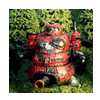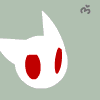| Brood Brother |
 |
 |
Joined: Thu Mar 06, 2003 10:01 am
Posts: 7823
Location: Sydney, NSW
|
I know some of you are ORBAT freaks like me (yes thats you L4 and your SoTR  ) so you will beinterested a thread over at the EA Playtester Forum: ) so you will beinterested a thread over at the EA Playtester Forum:
http://forums.specialist-games.com/epic40k...._ID=461
The guts of the thread so far are thus:
-----------------------------------------
I am always interested in reading about the organization and tactics of armies from history or sci-fi. The Imperial Guard is a a real challedge in that thier army structure is so varied and diverse.
Just for fun, how do you imagine an IG army to be organized?
I know the ultimate answer is it all depends or there is no set pattern, but still is still fun trying to organize it. I would really like to hear other vision of this epic machine of war. So have fun answering the question. If you like, put examples of your Epic forces and how they fit into a larger army. If you want lay out some example TOEs.
I have a theory that some people at this forum have real fun flipping theough TOEs, just a guess
To me the real question is how big is a regiment, since that is the cornor stone of the IG structure. Any clues?
So here is the the basic chain of command structure I always carry in my head. I don't even know if the IG use some of this structure. But at least it's a blue print to build around.
Squad - Sgt
6-10 troopers or 1 vehicle
Platoon - Lt
~3 squads
Company - Captain
~3 platoons
Battalion - Major
~3 companies
Regiment - Colonel
~3 Battalions
Brigade - General
~3 Regiments
(Note: Because the IG Regiments in 40K tend to be big ~3000 people, I have always imgained that the brigade and Regiment are reversed within the IG. Just my silly theory. I left them here in their historical order.)
Division - Major General
~3 Brigades
Corps - Lt General
~3 Divisions
Army - General
~3 Corps
Army Group - Marshal
~3 Armies
Theater Command - Warmaster
~ Everything including the kithen sink
-------------
As defined by Roboute Guilliman, in the Tactica Imperialis (which covered all Non-Space Marine elements of the Imperial Army), an Imperial Guard Infantry Regiment is layered on 5 levels.
The first of these, and least obvious, is the Fireteam. In most regiments, this consists of 3 men, one of whom will be designated as a Team-Leader - I'm going to avoid naming ranks whereever I can here, as the specifics vary immensely.
Then, there is the Squad. Conventionally, the Squad consists of 3 fireteams, under the direct command of a Squad Leader - be he known as Sergeant, Decurion or some other title. One fireteam will have the squad's Vox-caster or Commlink, one will have the squad's Heavy Weapon, and the third will have the unit's Special Weapon (ie, Flamer, Grenade Launcher)
The Platoon is normally made up of between 2 and 5 Squads, and led by a Junior Officer and his immediate staff. A full strength Platoon is assumed to be 55-men strong.
A Company then consists of between 2 and 6 Platoons of varying sizes, grouped together under the command of a Senior Officer and his immediate staff, as well as around 30 men designated as the company's Fire Support, and grouped off into Heavy Weapons Squads of 6 men each.
A Veteran Senior Officer is then placed in command of anywhere from 3 to 20 companies (sometimes more), along with his command staff, and the attached fire support. This is the top end of the Regimental structure.
Beyond that, there are the ranks of General and Lord-General, who act to co-ordinate the actions of multiple regiments. Above them, for prolonged conflicts, are Lord-Castellans, and eventually, the title of Warmaster, which represents ultimate military power, and the ability to command both Guard and Navy. The title Warmaster is awarded rarely, as it's most notable bearer all but destroyed the Imperium. For this reason, those few that ARE appointed with such a rank, are given different titles - Lord-Commander is one such variation - to try and avoid the ill-fate that befell the Imperium when one such leader turned on his master.
Most regiments are 'pure' and consist only of one type of formation - in the example mentioned, this is Infantry Squads. As is obvious, there are other types of regiment, ranging from Armoured, to Mechanised Infantry, to Recon, Rough Rider and Artillery regiments.
Mechanised Infantry and Rough Riders are organised in roughly the same way as Infantry regiments. Armoured and Artillery regiments deviate somewhat at the lower levels, where the Squad level is replaced by individual vehicles, and the platoons are replaced by squadrons or batteries of 3 vehicles.
Very rarely do companies remain as they are in a campaign - often units, such as support vehicles (Hellhounds, Sentinels, etc), are added to a company to increase it's abilities in the field, and such attachments tend to stick in longer campaigns, with support units being re-marked to show thier new association. Very rarely does a company return from a campaign as it was when it started.
Some regiments, most famously the Armageddon 'Steel Legion', operate with 'mixed' regiments, where each regiment is made up of multiple companies of different sorts - ie, a 3 company regiment might consist of a Mechanised Infantry company, an Armoured Company, and an Artillery Company.
In other cases, companies or platoons might be detached from thier regiment, to be added to another formation, in what has become known as the Battlegroup. This normally revolves around Armoured Companies, with Mechanised Infantry, Recon and Artillery units in support, and which normally consist of 4 companies or equivalent.
Note that few regiments stick precisely to the suggested Doctrine, and many have addition ranks and layers of command within thier structures.
That'll have to be enough for now. I'll unearth my Imperial Armour book later, and detail some more about Armoured, Recon and Artillery companies from the notes and diagrams in there.
----------
As I said in my last post, Imperial Guard command structure changes at the platoon level depending on what kind of regiment is in question. In this post, I'll detail those regiments who are heavily reliant on Armoured support.
The standard Armoured Company consists of a single command tank, with commanded by a Senior Officer, and then 3 squadrons of 3 tanks each, with each squadron having a Junior Officer, 2-i-c, and a Sergeant, one acting as the commander in each of the three tanks. Most regiments have companies of a single type of tank, for ease of logistics and maintenance, while others will mix tanks, for tactical flexibility. Regardless, it is common for the Company Commander to be mounted within a rarer variant of Leman Russ, to demonstrate his importance.
Often, added to this will be squadrons of more specialised tanks; Executioners, Thunderers, Destroyer Tank Hunters, etc, split off from thier own companies, and placed in a supporting role.
The next step up are Super Heavy Tank Companies. Each company is again commanded by a single vehicle for the Senior Officers. After that, the company consists of one Squadron of 3 Super Heavy Tanks, most commonly Baneblades, as they are the workhorse SHTs. Each tank is commanded by a Junior Officer, one of whom will be the Squadron Commander, one will be the Squadron 2-i-c. In many cases, however, individual tanks will be split off in support roles - the Titan-hunting Shadowswords or Stormblades, and the Stormsword Super Heavy Siege Tank are both used extensively in this manner, as opposed to the more common Baneblade companies.
Next, the Armoured Fist, or Mechanised Infantry companies.
As is always the case, the company is led by a Senior Officer, in this case, mounted in a Salamander Command Vehicle. He commands 3 platoons of Armoured Fist squads. Each platoon is led by a Junior Officer and his immediate staff, and consists of 5 Infantry Squads, and a single Heavy Weapons Squad, all mounted in Chimera IFVs. Often, individual platoons, or even squads, are detached from the AF companies, to provide high-speed assault elements for an Infantry Company, or to provide Infantry Support for Armoured Companies.
Artillery Companies share many elements of thier structure with Armoured Companies, being built around 3 batteries of 3 Artillery Pieces, and led by a Senior Officer, in this case, mounted in a Salamander or Chimera, modified to provide long-range tactical information to the Company. Again, individual batteries, or lone vehicles, are often attached to other formations, or, almost uniquely amongst companies, to static positions, where the Artillery wll be mounted in fixed emplacements, or on towable platforms.
Hydra Flak Tanks are organised into Companies, but are rarely fielded as such - individual Hydras are instead attached to other formations, or fielded as squadrons in support of a larger force. Where Hydras aren't availible, other vehicles, such as the Manticore, or Leman Russ Exterminator, are pressed into service as AA vehicles.
To finish this off, I'll detail the full Orders of Battle from the 19th Krieg Armoured Regiment. The Orders of Battle dictate the vehicles used, what numbers of them, and in which squadrons they are placed. This is merely me copying down what is detailed on page 258-259 of Imperial Armour volume 1.
For those who don't know, the Trojan is a Chimera-based vehicle, designed as a multi-role utility vehicle. The Atlas is based on the Leman Russ chassis, as used as a Recovery Vehicle.
Regimental HQ: Leviathan Command Vehicle
Attached to that -
Armoured Recon Formation: 3 Sentinels
Communications Formation: 3 Chimeras, 2 Trojans + trailers
Supply Formation: 8 Trojans + trailers, 3 Sentinel Powerlifters
Medical Formation: 10 Chimeras acting as Ambulances
Recovery Formation: 3 Atlas, 3 Trojans + trailers
Workshop: 3 Trojans
3 Armoured Companies:
Each consisting of: 1 Company HQ in Leman Russ
3 Squadrons of 3 Leman Russ
3 Mechanised Infantry Companies:
Each consisting of: 1 Company HQ in Chimera
3 Platoons, each consisting of: 1 Platoon HQ, 4 Infantry Squads, 1 Heavy Weapons Squad, all in Chimeras.
1 Group of Commissars mounted in 5 Leman Russ
1 Armoured Artillery Company: One Company HQ consisting of 1 Chimera, 1 Salamander
4 Batteries of 3 Basilisks
1 Anti-Aircraft Company: One Company HQ
3 Batteries of 3 Hydras
1 Armoured Reconaissance Company: One Company HQ, consisting of 1 Salamander
2 Squadrons of 4 Salamander Scouts
2 Squadrons of 4 Sentinels
One Anti-Tank Platoon: 3 Destroyer Tank Hunters
Inter-regimental Support:
50th Cadian Heavy Tank Company: 3 Baneblades, 1 Shadowsword
113th Dniepr Siege Tank Company: One Company HQ consisting of 1 Demolisher
3 Squadrons of 3 Demolishers
24th Pardus Siege Gun Squadron: 3 Medusa
11th Sareanian Assault Engineer Company: 1 Command HQ mounted in Chimera
3 Platoons of Mechanised Infantry, each consisting of 1 Platoon HQ and 3 Infantry Squads, all in Chimeras, 1 Bridging Unit and 3 Engineering Units, each consisting of 1 Chimera, and one Cyclops Remote Demolition Vehicle and operator
Alternative Vehicles:
For clarity and simplicity only the main vehicle type is listed for each unit. The exact vehicles present may vary by type:
For Leman Russ also read: Exterminator, Conquerer, Vanquisher, Executioner.
For Demolisher also read: Thunderer or Hellhound
For Company HQ Chimeras also read: Salamander Command Vehicle
For Basilisk also read: Griffon, Medusa, Bombard, Earthshaker Platform and Trojan, Manticore Platform and Trojan
For Hydra also read: Hydra Platform and Trojan
TO & E
Personnel
1 Colonel, 17 Captains, 48 Lieutenants, 5 Commisars, 210 Sergeants, 1064 of other ranks.
Vehicles
45 Leman Russ, 10 Demolishers, 12 Basilisks, 9 Hydras, 11 Sentinels, 9 Sentinel Powerlifters, 13 Salamanders, 3 Destroyers, 3 Medusa, 9 Cyclops, 3 Bridges, 94 Chimeras, 6 Atlas, 3 Baneblades, 1 Shadowsword
_________________
Tas
My General blog: http://tasmancave.blogspot.com/
My VSF Blog: http://pauljamesog.blogspot.com/
My ECW Blog: http://declaresir.blogspot.com/
|
|








